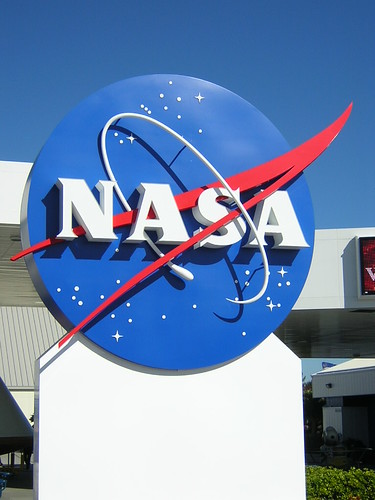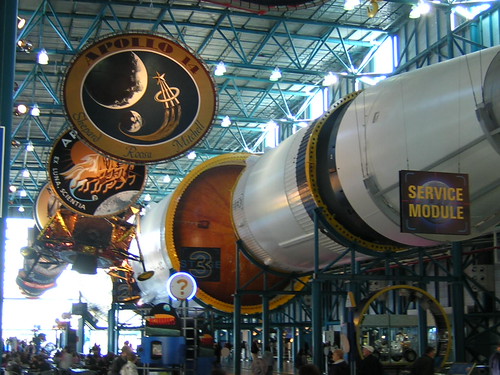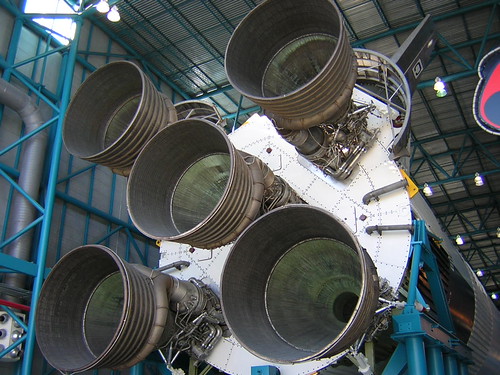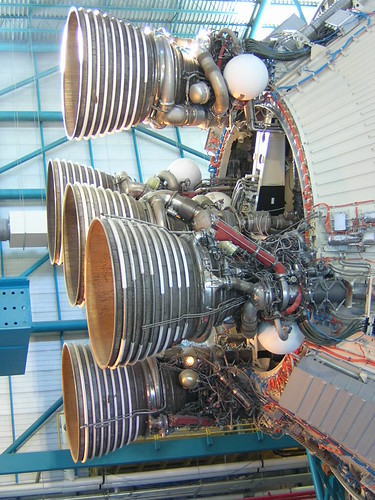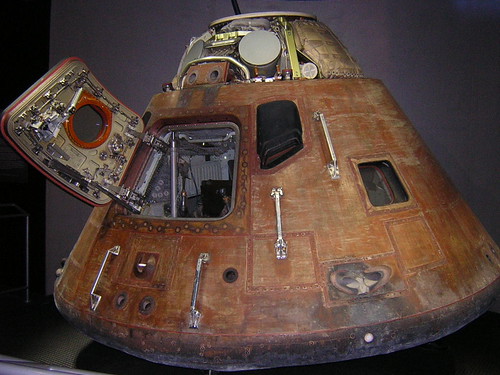
Kennedy Space Center: Saturn V
After attending the 2010 AIAA ASM Conference in Orlando, I took the opportunity to bask in the Florida sun (if not heat - it was unseasonably cold, though still a whole lot warmer than New Hampshire in January) and visit the Kennedy Space Center. The highlight of the visit to Cape Canaveral was the Apollo/Saturn V Center, which houses a complete Saturn V rocket - follow along for a pictorial review of my trip with historical perspective thanks to Wikipedia.
Everything about the Apollo program was on an enormous scale, from the Vehicle Assembly Building (VAB) to the Saturn V moon rocket.
The VAB is currently the fourth largest building by volume in the world. It was originally built to assemble the Saturn V rockets, and now is used to mate the Shuttle Orbiter with its external fuel tank and solid rocket boosters.
The 3 stage Saturn V was 110.6 m (363 ft) long and 10.1 m (33 ft) in diameter. Its launch weight was 3,038,500 kg (6,699,000 lb). It dwarfs anything launched into space before or since - definitely NASA's finest hour.
The first stage of the Saturn V was powered by 5 F-1 rocket engines igniting kerosene with oxygen. The engines pushed the Saturn V to a speed of 6,000 mph and an altitude of 38 miles in under three minutes - now that is acceleration! The F-1 is still the most powerful liquid-fueled rocket engine ever to fly.
The second stage of the Saturn used 5 J-2 rocket engines and the third stage used a single J-2. These engines allowed the rocket to achieve Low Earth Orbit (LEO), and then the third-stage rocket was used again to exit LEO and head off towards the moon. The J-2 ignited hydrogen with oxygen for its thrust. Until the introduction of the Space Shuttle main engines the J-2 was America's largest liquid hydrogen engine.
The Apollo Lunar Module (LM) consisted of two components - the descent and ascent stages. The descent stage was used to land on the lunar surface. Upon completion of the lunar excursions, the ascent stage separated from the spent descent stage and returned the astronauts back to the orbiting command module to begin the trip back to Earth.
With the introduction of the Lunar Roving Vehicle (LRV) on the last three Apollo missions, astronauts were able to explore the lunar surface over a much greater range - venturing up to 4.7 miles away from the LM. Notice anything odd about the LRV? Given that there's no atmosphere on the moon, there's no need for aerodynamics - so even if Computational Fluid Dynamics (CFD) was available back in the 1960s (which it wasn't) there wasn't any need for it.
For all the immense size and weight of the Saturn V at launch, all that came back to Earth was the Command Module (CM) - a little bigger than the 3 occupants it delivered, via a fiery re-entry through the atmosphere, to an ocean splash down. Weighing in at 5806 kg, the CM made up only 0.2% of the original launch weight of the Saturn V.
- Richard Smith's blog
- Login to post comments
Select Language
Recent blog posts
- CFD Simulates Distant Past
- Background on the Caedium v6.0 Release
- Long-Necked Dinosaurs Succumb To CFD
- CFD Provides Insight Into Mystery Fossils
- Wind Turbine Design According to Insects
- Runners Discover Drafting
- Wind Tunnel and CFD Reveal Best Cycling Tuck
- Active Aerodynamics on the Lamborghini Huracán Performante
- Fluidic Logic
- Stonehenge Vortex Revealed as April Fools' Day Distortion Field

